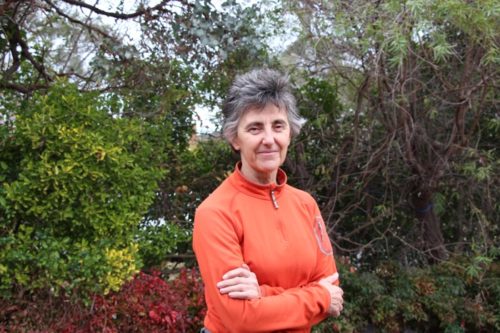
“The moment you send people it costs a lot,” says Christine, 54, of O’Connor.
According to Christine, the cost of fuel could be one of the many reasons humans haven’t been back to the moon in 50 years.
Nevertheless, she says the moon landing was a “big step for mankind”.
“It was a source of inspiration and it positively touched and inspired an unprecedented number of people at once,” she says.
“[The moon landing] was really cool because everyone can see the moon and dream about the moon. It’s in space but it’s also close enough to see,” she says.
Looking towards the future of space travel, which is Christine’s specialty, she’s working on mitigating the costs and is currently working on electric plasma space engines.
“To me, what’s interesting about the future of space travel is we will be using diverse technologies,” she says.
“If you really want to do deep-space travel in the future, you probably will have to use electric propulsion, otherwise the amount of fuel you have to take from the earth is too great.”
This is where the fourth state of matter, plasma, a hot ionised gas, comes in.
“A natural plasma is the sun, the sun is a really, really hot plasma,” Christine says.
“Plasmas are so important because they are used to make integrated circuits.
“Without plasma, there are no smartphones.”
When Christine was working with plasma to make better small micro transmitters (also used to make technology such as smartphones), she came across some really interesting stuff.
“If I can manipulate a plasma then I can create a force that’s effectively a space engine,” she says.

“I think future space missions will have a combination of chemical thrusters (engines) and electric plasma thrusters.”
Traditionally, Christine says chemical propulsion was used to get into space and while it will always be used to get off the earth, once a spacecraft is off this gravity pull, then there’s choice between chemical propulsion and electric propulsion.
Electric propulsion has been used before and Christine highlights the SMART-1 satellite, which was sent by the European Space Agency between 2003 and 2006 on a mission to orbit around the moon.
“This mission demonstrated that you can go to the moon with electric propulsion but you have to be a little bit patient,” she says.
According to Christine, SMART-1 only used the same amount of electric power as a hairdryer and it used about 60 litres of fuel – equivalent to some cars.
“The fuel is to get to low earth orbit,” she says.
“Once it’s away from the earth’s atmosphere, there’s less force needed and [the rocket] starts to orbit around the earth. Here, the rocket can then deploy the different satellites, which deploy solar power that starts generating electricity on board.
“Because plasma is ionised it responds to magnetic fields and electric fields so we can use plasma to generate a force on a spacecraft.”
What Christine is trying to do is develop the most simplistic thruster (engine) people can think of, which she says won’t break down half way through a mission, will have extended life and will also work with all types of fuels.
“We want to make sure it’s not too complicated, just a few parts, which can work with different propulents and which can also be repaired, if necessary, by astronauts.”
And while Christine’s dedicated a lot of her life working on engines that could help take others into space, she says she wouldn’t go herself.
“Personally, I don’t really like flying,” she says.
“I think earth is beautiful and I want to see more of the earth and I want to protect it as much as I can. But I’m super happy to help astronauts go into space.”
Who can be trusted?
In a world of spin and confusion, there’s never been a more important time to support independent journalism in Canberra.
If you trust our work online and want to enforce the power of independent voices, I invite you to make a small contribution.
Every dollar of support is invested back into our journalism to help keep citynews.com.au strong and free.
Thank you,
Ian Meikle, editor





Leave a Reply